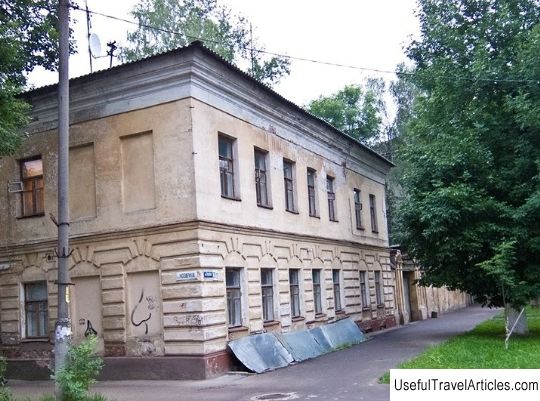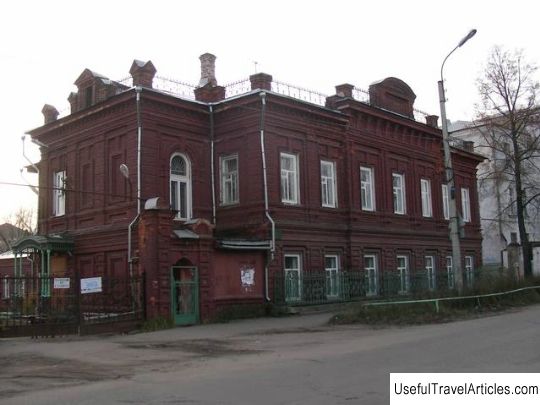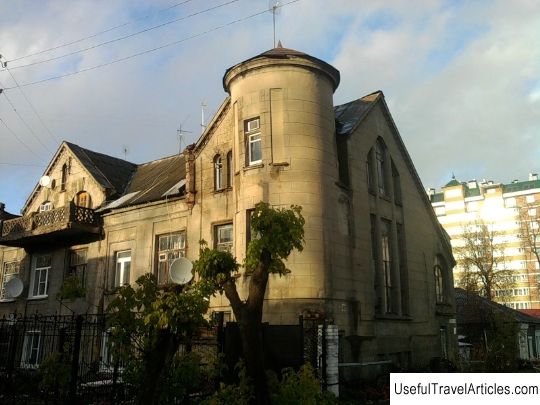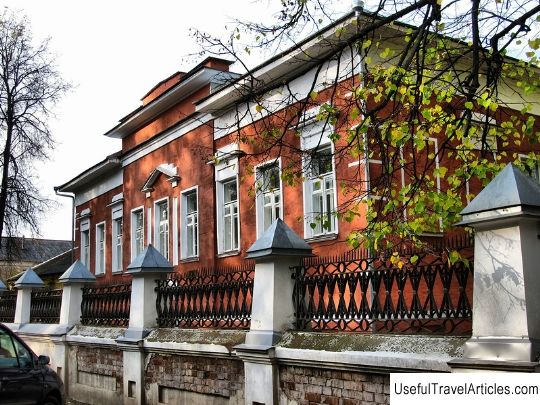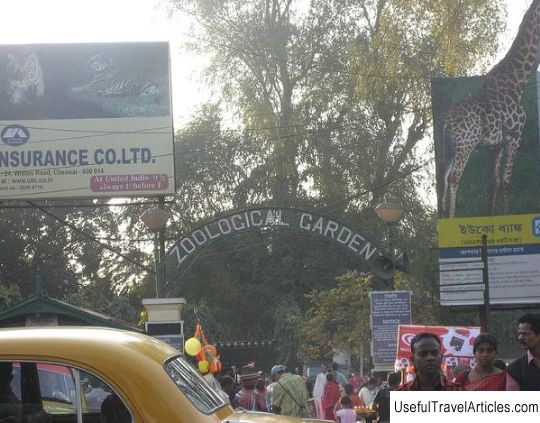Estate of N. F. Zubkov description and photo - Russia - Golden Ring: Ivanovo
Rating: 8,5/10 (9764 votes) 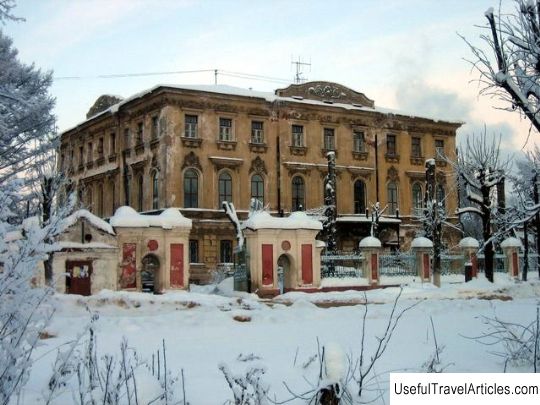
N.F. Zubkov description and photo - Russia - Golden Ring: Ivanovo. Detailed information about the attraction. Description, photos and a map showing the nearest significant objects. Photo and descriptionEstate of N.F. Zubkova is located on the former Dmitrievskaya Street (today Rabfakovskaya) - the main thoroughfare of the Dmitrievskaya Sloboda. This estate once belonged to the large Ivanovo manufacturer Nikolai Fedorovich Zubkov. The estate includes the main house, facing the street, an outbuilding located behind it, an outbuilding that limits the courtyard to the right .. The town-planning significance of the estate is high due to the palace character of the main building, the large scale of its high-window facades, which are stylized in the Baroque style. The main house of the estate is a plastered brick building, U-shaped in plan, with a hip roof. It was erected in 1846 (architect K.A.Ton). The main and side facades have the same structure with nine axes of the openings; the central part is highlighted by a figured attic. On the first floor there are small windows with bow-shaped lintels, on the second - arched elongated ones, on the third - rectangular and low. On the middle axis of the main facade there is an entrance with a porch lined with white stone over the entire width of the projection, above which there is a cast-iron balcony on four supports with openwork details. There is also a white stone porch on the southern side facade. All facades of the building are decorated with ornate pseudo-baroque stucco decoration dating back to the years 1880-1890. Above the windows of the 1st and 2nd floors there is a frieze with a complex plant pattern; the windows of the second floor are decorated in turn with relief cartouches and multi-shaped sandrikas. The interior of the main house is distinguished by a variety of finishes and a wealth of materials. The main staircase located in the lobby - marble in the lower part and cast iron above with the finest lace pattern of the fence - is one of the most beautiful and significant elements of the interior decoration. The staircase is decorated with molded friezes, cornices, and a figured shade. In some rooms on the second floor, the stucco decoration that dates back to the 1860s, made in the eclectic style, is still preserved. The rooms on the third floor have more modest stucco moldings. The main house still has three fireplaces and tiled stoves. Female masks are included in the wall ornament; mascarons and griffins adorn the fireplace and doorways. The utility building has a U-shape in plan. Its central part is two-story (it has two axes of windows), it is turned towards the main house. The wings of the utility building have one floor. The walls are plastered and brick. The utility building is covered with pitched roofs. The wing is a two-storey brick building facing a courtyard with three axes of rectangular windows. The corners of the volume are fixed with paneled blades. The middle axis of the main facade is fixed by an attic window. The fence of the main facade of the manor is realized in classicistic monumental forms. Stone quadrangular pillars are installed on the base and connected by links of a metal grid. This part of the fence is equal in length to the main facade of the house. On the flanks along the front of the street there are massive gate pylons. The pylons are decorated with rectangular panels that end with a stepped cornice. From August 1918 to December 1919, the commissariat of the Yaroslavl Military District was located here; its offices were transferred to Ivanovo-Voznesensk from Yaroslavl after the suppression of the White Guard revolt. From August 1918 to January 1919, the military commissariat was headed by M.V. Frunze, then he was replaced by A.I. Zhugin. In 1920, this building housed infantry courses, which were transformed into the twenty-seventh infantry school for command personnel in 1921, and in 1925 it was assigned to the Oryol Armored School. From 1927 to 1930, the working faculty of the Ivanovo-Voznesensk Polytechnic Institute was located here. In the period from 1933 to 1942 there was a medical institute in the estate, and from 1941 to 1945 - a hospital of the Baltic Front. In 1946, a secondary agricultural school was located in the building, where the collective farm chairmen were trained. In 1958, the building was transferred to the health department of the Ivanovo region. Now it is used for the needs of the Ivanovo Center for State Epidemiological Surveillance.         We also recommend reading Carsulae description and photos - Italy: Umbria Topic: Estate of N. F. Zubkov description and photo - Russia - Golden Ring: Ivanovo. |
